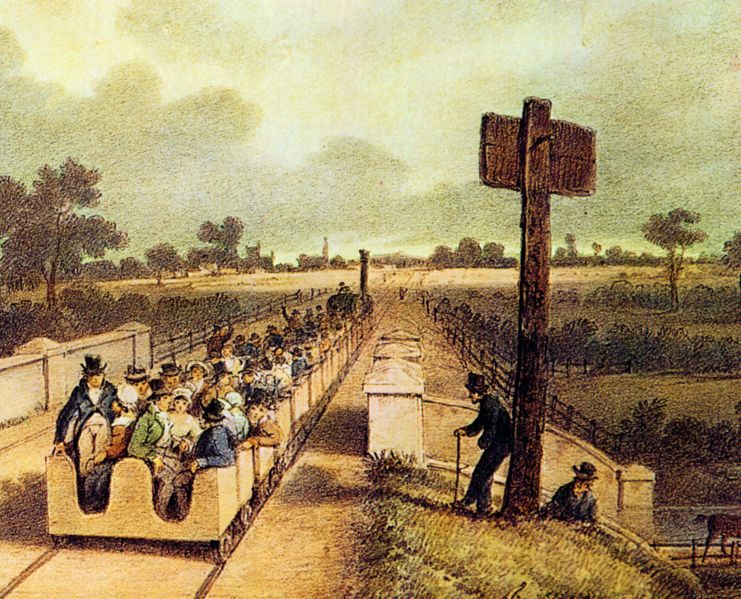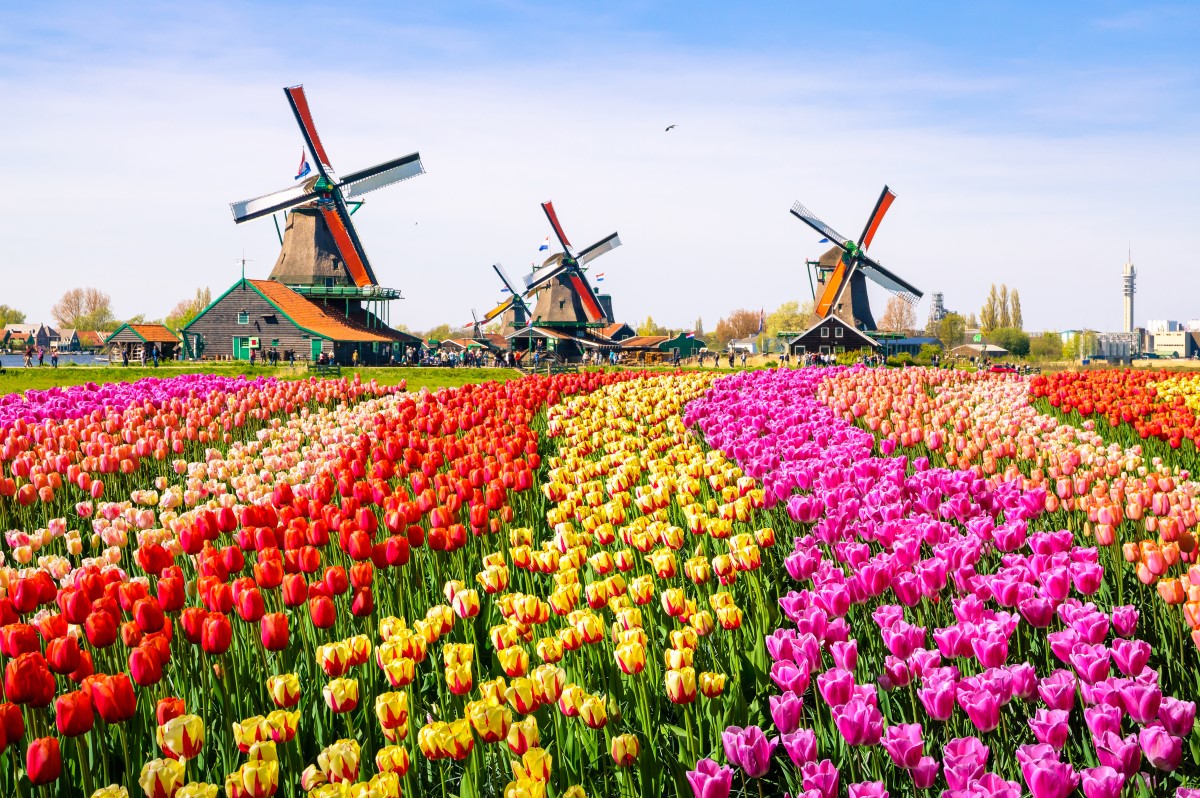Summary: I talk about the mental game of investing, particularly as it applies to crypto markets. Subscribe here and follow me to get weekly updates.
In the 1840s, investors in the United Kingdom went crazy for railroad stocks.
The Industrial Revolution was churning away, creating a need to transport new goods, products, and heavy machinery. Railroads were the answer.
A flurry of new companies acquired land and promised to build chunks of railway to connect the continent. They would fund these massive projects by selling stock to everyday investors.
Fueled by a young newspaper industry, the British public began to pour money into railroad stocks. The UK government did little to stop the speculation; in fact, it approved nearly all the applications by these companies, even the sketchiest.
When the Bank of England raised interest rates in 1945, the bubble popped. In some cases, it wiped out investors’ life savings.
And so ends the story of “British Railway Mania” in most history books, except it leaves out one critical detail: the railroads eventually got built.

Why Manias May Be Quite Sane
Most bubbles are described by historians as “manias” or “frenzies,” just as bank runs are called “panics” or “contagions.” The implication is, these people went nuts.
I have a different point of view: bubbles are an unspoken, unconscious agreement to fund large projects to better connect society.
In the case of the UK railroad bubble, while many of the proposed railways were impractical, there were a good number of useful routes that were publicly funded and built. After the bubble burst, these routes were acquired by the larger railways (at a deep discount), and consolidated into a connected whole.
A similar railroad bubble formed in the US about 30 years later, but this time the government took a more hands-on approach, promoting and subsidizing much of the railway development. The result: more railway companies became profitable more quickly, and more shareholders were rewarded.
In both cases, we can see that the project – connecting the entire country by railroad – was too large and ambitious for the governments of the day. Instead, private enterprise, fueled by money from individual investors, stepped in to build these massive infrastructure projects.
There can be little doubt that railroads were a huge social good. They made it easier to transport people and products. They put long-distance travel within reach of everyone. They drove progress and innovation, making the Industrial Revolution even more revolutionary.
If the governments couldn’t or wouldn’t build them quickly enough, the public stepped in.
Note that this agreement was unspoken and unconscious. On the surface, it was driven by FOMO: Everyone’s investing in railroad stocks and getting rich, so why shouldn’t I?
But on the level of our collective consciousness, our “hive mind,” we share certain norms and values to govern everyday life. One of these values is the need for humans to connect with other humans.
For proof, just look at the other financial bubbles that have arisen through the last several hundred years:
- East India and South Seas bubble: Funded companies to connect trade routes from Europe to the world;
- Canal bubble: Funded canals to connect waterways throughout England and Wales in the early 1800s;
- Telecom bubble: Funded massive fiber optic networks to connect households in America and elsewhere;
- Dot-com bubble: Funded new Internet ventures to connect businesses and consumers to the Web;
And of course:
- Crypto bubble: Funded new Web3 companies to connect the world to a digital financial system.
These are all connecting technologies.
They’re so big (and today, so global) that a single government can’t fund them.
So we agree, as a society, to fund them ourselves.
This is an unspoken and unconscious agreement.
Later, historians call it a speculative craze or an irrational mania, but it’s actually quite rational.
We’re building infrastructure that benefits us all.

The Benefits of Bubbles
Why do we come up with these unspoken, unconscious agreements, then pour our life savings into them? Greed plays a part, leading to financial ruin for many people. However, bubbles also bring important and lasting benefits to society.
Innovation and progress: Each of these bubbles ushered in a new era of scientific and technical innovation. When we connect people, we’re also connecting their brains. Ideas and information flow more freely. Just as railroads accelerated the Industrial Revolution, these bubbles accelerate human progress.
Wealth creation and redistribution: When ordinary investors invest in these large-scale projects, they share the risk, sometimes losing it all. But they also share in the reward, which can redistribute wealth from the rich to the less-rich. The housing bubble of the 2000s, for example, led to a significant increase in home values, giving middle-class homeowners more money to invest elsewhere.
Job creation and economic growth: I got my first job during the dot-com boom, so I remember well the seemingly unlimited opportunities and wealth creation (it’s the first chapter of my book). Even after the bubble bursts, there is typically a new segment of the workforce that is trained and ready to work.
Societal benefits: Railways and canals brought improved infrastructure. The Internet brought better access to information and education. All these lead to higher living standards. If managed properly, bubbles can help build massive social good.
I believe every bubble brings at least some of these benefits. Even the Dutch Tulip Bubble turned Holland into the “Flower Shop of the World.”

Are We in a Crypto Bubble?
You can only see a bubble in hindsight.
For that reason, it’s hard to say whether crypto is in a bubble, already went through a bubble, or waiting for a bubble to come.
It doesn’t matter: a crypto bubble should actually give us cause for hope.
If bubbles are an unspoken, unconscious agreement to build a valuable project for society, then by definition, a crypto bubble would be building a new financial system that connects the world.
That’s what we crypto investors have been saying for years, of course. But viewed in the context of history, we can now say it with confidence.
Another huge lesson is that bubbles have better outcomes when they are well-managed by government. Remember the laissez-faire attitude of the UK government toward railway stocks was a disaster for investors, while the US government’s management and promotion of them was a boon for investors.
The lesson for us today could not be more clear: as legislators sit on their hands in regard to this new financial system, and regulators try to apply old laws to new technologies, it’s worse than doing nothing. Bubbles must be actively managed, both with good laws and good regulation.
As crypto investors, nothing changes in our approach. No matter where we are in the bubble, we patiently invest a little bit each month into a handful of quality digital assets, as a tiny part of a well-diversified portfolio. And we think long-term (five or more years).
There’s a reason we often refer to this new financial system as “payment rails.” We’re literally building today’s version of the railroad. One that transports value, not people. That’s a social good that will benefit everyone, everywhere in the world.
Full steam ahead.
50,000 crypto investors get this column every Friday. Click here to subscribe and join the tribe.

